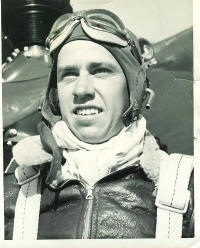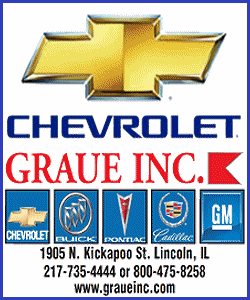 Much of the information in this article was reported by Horn and his
crew members at their 100th Bomb Group reunion in Little Rock, Ark.,
in 1993. "Many of these details had been previously unknown to 100th
BG historians for nearly half a century," a source said. Much of the information in this article was reported by Horn and his
crew members at their 100th Bomb Group reunion in Little Rock, Ark.,
in 1993. "Many of these details had been previously unknown to 100th
BG historians for nearly half a century," a source said.
As a B-17 pilot, Lt. Horn was the aircraft commander, or P, with
nine other crew members: co-pilot, CP -- handled ground maneuvering;
flight engineer, TTE -- top turret, engine health monitor;
navigator, NAV -- determined position relative to earth; bombardier,
BOM -- delivered payload on target; radio operator, ROP --
communications; ball turret gunner, BTG -- enemy fighter protection;
two waist gunners, WG -- right and left enemy fighter protection;
and tail gunner, TG -- most important defensive weapon. The
installed weapons were .50-caliber Browning machine guns.

Horn's plane was heavily damaged during its fourth mission over
Munich and Augsburg, Germany, on March 18, 1944. Besides taking on
heavy flak damage, his "Bastard's Bungalow II" B-17 suffered
extensive fuselage and multi-engine damage from debris of two
damaged B-17s that had pancaked in midair immediately ahead. Horn
had to quickly pull the throttles back to avoid becoming the "meat
of a sandwich," which was occurring before them. His B-17 508 was
able to remain in formation in spite of the heavy damage and
proceeded to bomb the Munich rail yards.
On the "homeward-bound leg of their mission," their aircraft took
on more flak damage and now could no longer maintain sufficient
airspeed to remain airborne much longer. A P-47 fighter plane had
been flying escort but had to break off due to its fuel shortage --
with its pilot giving a friendly salute to Horn upon departing. Soon
thereafter, two German fighters, ME-109 and FW-190 aircraft, joined
up with them, one on each wing. They quickly gave Horn a
"thumbs-down" signal, meaning to land in the field below --
immediately.
Horn then radioed his crew that a crash landing had to be made
and commenced lowering his landing gear to prevent these enemy
fighters from further attacking his stricken and helpless plane -- a
"white flag" surrender. He managed to crash-land, with all crew
members alive, near Ulm, Germany -- "with Lt. Horn making a super
smooth dead-stick, wheels-up landing in a snow-covered field," which
initially appeared to be a farm but which turned out to be the
grassy edge of Dornstadt Air Field.

Horn and his crew were quickly greeted by "irate farm workers
armed with pitchforks and pistols," preventing their dash to nearby
woods to avoid capture. Surprisingly, the ME-190 fighter pilot had
landed next to their plane but nosed over and crashed. The pilot was
not injured, as he quickly got out and ran over to take control of
the capture. Horn and his crew were held captive for 20-30 minutes
until German militia men arrived to move them to the nearby Ulm city
jail.
Horn ended up in solitary confinement for a time at Stalag Luft
III, South Compound Sagan, in Silesia, Germany, following his
interrogation at Dulag Luft at Frankfurt. Just two weeks before his
death, Bob related that during his captivity at Frankfurt, his
interrogating officer showed him his wallet. Bob read the name, Lt.
Robert Horn. He said they both managed a smile.
Bob was liberated at Moosburg, Germany, on April 29, 1945,
whereupon he was promoted to captain.
Bob also said that he continued to put in his monthly flight
hours at Rantoul Air Force Base for about a year after returning to
the states, in order to continue receiving half of his flight pay.
[to top of second column] |

The epilogue to "Clipped Wings," a reunion book of the 100th
Battle Group, reads as follows:
Allied air men were
the first invaders to break into the German stronghold of Europe and
Africa. Flying over German-held positions through black clouds of
flak and into swarms of yellow-nosed F.W.'s could surely be called
nothing less than an invasion. During the air battle of Europe,
close to 8000 American Planes and 40,000 American flyers were shot
down. But the sub pens bombed out of commission, the marshalling
yards hit and the aircraft factories blown up brought war's end
years nearer and more than paid for such a great loss. The story as
told in the preceding pictures and commentary is an attempt to
describe how these early invaders who were forced down adapted
themselves to a mode of living completely foreign to their natures.
Bob's inscription included in his reunion book reads as follows:
Property of Robert
J. Horn, March, 1984. Shot down over Munich-Augsburg, Germany, Mar.
18, 1944. Liberated at Moosburg, April 29, 1945. Interrogated at
Frankfurt. Solitary confinement. Quartered at Stalag Luft III, South
Compound, Sagan, Germany.
The "Clipped Wings" reunion book contains this poem:
The fate we share
as prisoners is drab and often grim, existing on such scanty fare as
Reich bread, spuds and klim. Beds and books and little else to fill
time's flapping sail, she makes or loses headway all depending on
the mail. Oh drab the days slow to pass within all the joys of
living are still in the future tense. So here's to happy days ahead
when you and I are free to look back on this interlude and call it
history. -- J.B. Boyle
Note: Robert Horn was a very popular but quiet guy in Mount
Pulaski all these years, not saying much about his war and captivity
experiences until recent years to some of his friends and close
acquaintances. He served 35 years in the Mount Pulaski Post Office,
about 12 or so as postmaster. He was an avid and excellent golfer.
There are only two left from his crew, both of whom sent flowers
to his funeral, which was held in the Mount Pulaski Zion Lutheran
Church. He was buried with full military rites in the Mount Pulaski
Cemetery.
___
Sources: Capt. Robert Horn, interviewed by Phil Bertoni (Vonderlieth
Living Center, Feb. 12 , 2010); "Clipped Wings," a 100th Battle
Group reunion book, published by R.W. Kimball, narrated by O.M.
Chiesl, 1948;
http://www.100thbg.com/
___
Obituary:
Robert Horn


A bomber similar to the one Horn and his crew would have flown |